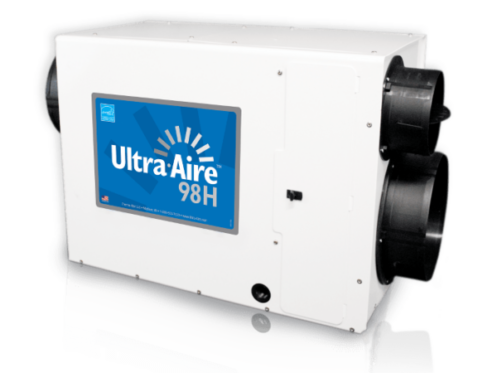Everybody likes cooling off during the summer. But do you know what everyone likes just as much? Drying off. After all, it’s not just the heat that makes us uncomfortable. It’s the high humidity, too.
If you’re like many people around Atlanta, you may have purchased a whole-house dehumidifier to complement your air conditioner. Due to a host of factors – and oversizing is a big one! – many air conditioners simply don’t remove enough humidity to keep us comfortable. When installed properly, a whole-house dehumidifier can pick up the slack, so to speak, and remove the humidity that your air conditioner couldn’t.
But what if your whole-house dehumidifier doesn’t remove enough humidity?
It happens. Sometimes, you’ll have a hard time staying dry even after installing the whole-house dehumidifier. Is it better than just using your air conditioner alone? Probably. But it might not remove enough moisture to make you comfortable.
It’s all about the installation.
When people come to us with this problem, the cause is often the installation method: both ends of the dehumidifier were ducted into the existing HVAC system return.
This is a very common way to install a whole-house dehumidifier, but it’s far from ideal. In many homes, this installation method can prevent your dehumidifier and your air conditioner from removing as much humidity as they’re designed to remove. Here’s why:
Reason #1: High static pressure on the dehumidifier
When you duct both ends of a dehumidifier to your existing HVAC return duct, ƒyou’ve got to run the air handler fan to move the dry air into your home. When you do that, you expose the dehumidifier to more static pressure.
Why does this matter? Because as static pressure increases, your dehumidifier fan’s CFM decreases. At the same time, the amount of moisture that the unit can remove also decreases.
Reason #2: Unstable dew point
Your air conditioner removes moisture from the air, but not until the indoor coil gets cold. If you run a dehumidifier and the air conditioner at the same time, the relatively warm air from the dehumidifier passes over the AC’s evaporator coil and throws off the dew point.
The evaporator coil might not get cold enough to remove as much humidity as it should.
Remember, your AC is your first line of defense against humidity. The whole-house dehumidifier is a backup. When you prevent the AC from removing as much moisture as it could be removing, the dehumidifier has to work hard to keep up.
And with all that static pressure (see Reason #1), it might struggle to make up the difference at all!
Reason #3: Wet evaporator coil
Any time the dehumidifier kicks on after the AC turns off, you’ll still have to run the air handler fan to move the dry air into your home. As the fan moves that air across a wet coil, moisture evaporates back into the air stream.
Will the air in your home eventually get drier? Yes, but not without re-removing the moisture that just re-entered your indoor air!
Bottom line: running the air handler fan when the AC isn’t on always pushes moisture back into your home. Your dehumidifier will work less efficiently than it ought to.
Reason #4: Lack of AC maintenance
Your air conditioner should be removing lots of humidity on its own. When it can’t do that and your dehumidifier is struggling against the problems outlined in Reasons 1, 2, and 3, you might never achieve the desired humidity level in your home.
Regular AC maintenance includes cleaning both coils, cleaning the blower motor, and setting your fan to provide the proper CFM per ton. Addressing these issues can go a long way toward improving dehumidification!
The solution? Install your whole-house dehumidifier the right way.
We’ve written all about the best way to install a whole-house dehumidifier.
You need to install a dedicated return for bringing air into the dehumidifier. Then you connect the supply side of the dehumidifier to your existing HVAC supply plenum. This installation method avoids all of the problems described above!
Instead of forcing dry air through the air handler, you discharge it directly to your HVAC supply. This avoids the need to run the air handler fan. When you don’t run the air handler fan, you don’t increase static pressure on the dehumidifier. You also avoid the problem that always occurs when you run the fan after the AC turns off: moisture from the coil evaporates back into your air stream.
Re-install your dehumidifier this way, and you’ll probably be surprised at how well it performs!

